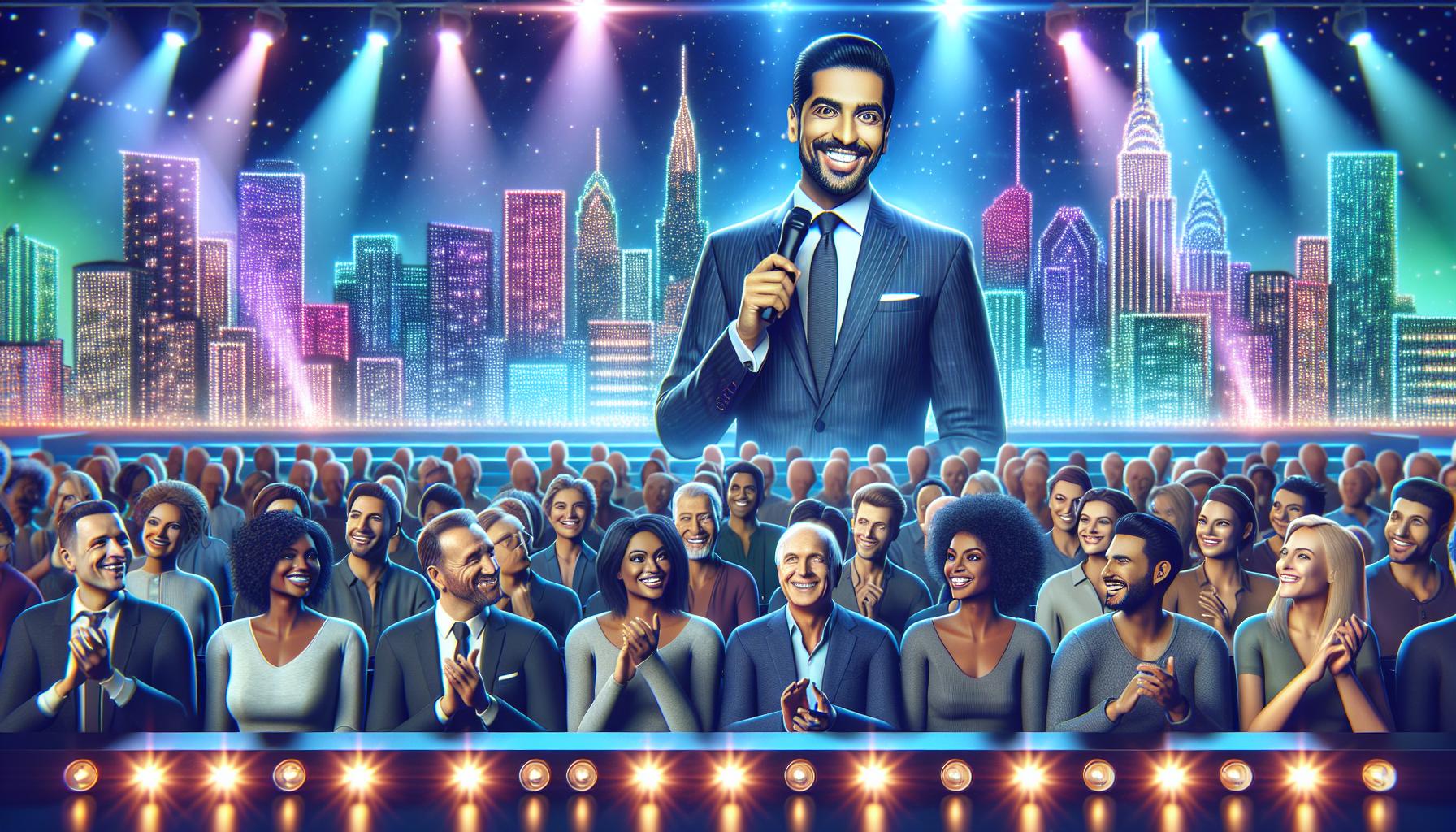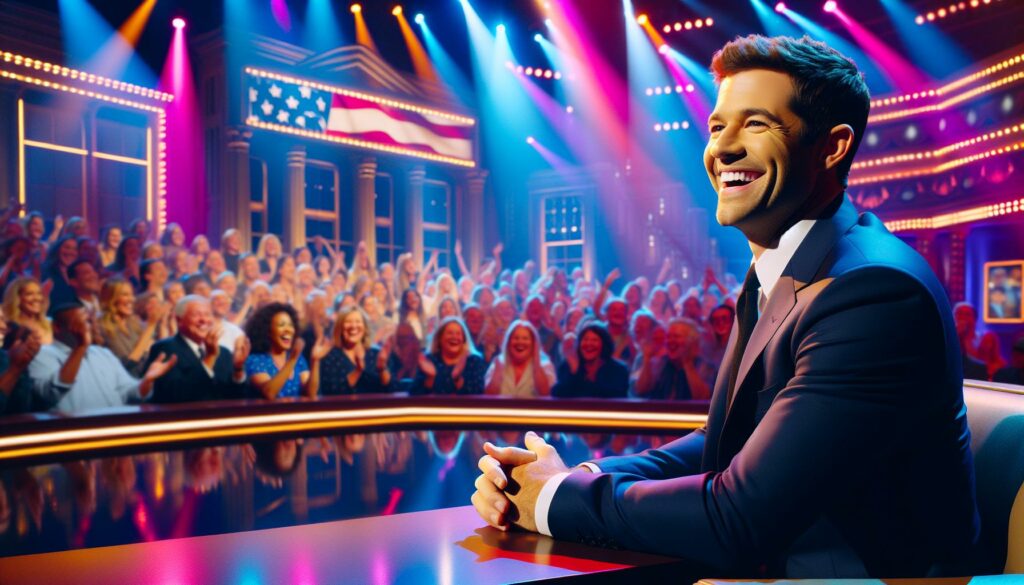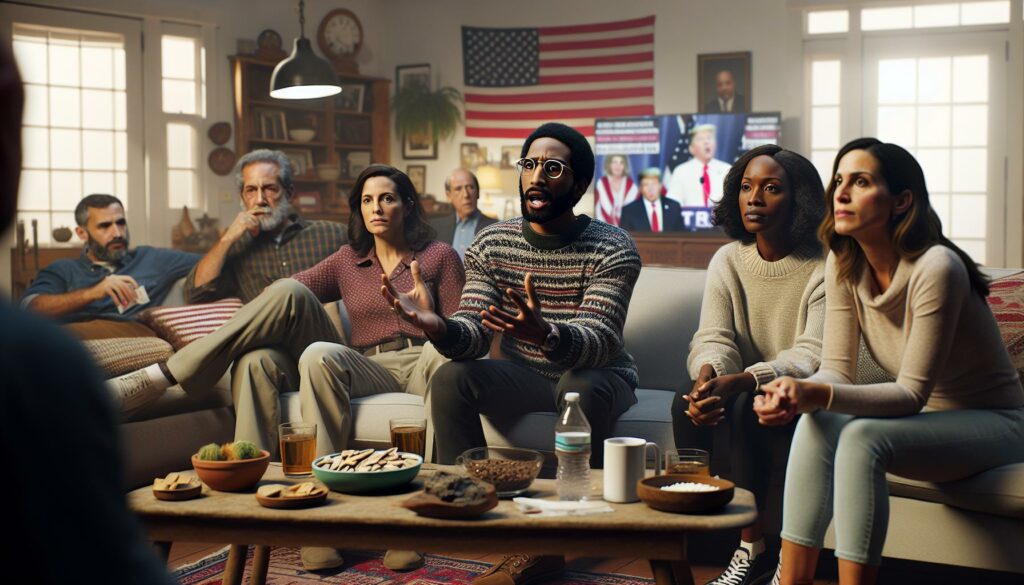Late night talk shows have become a staple of American entertainment, blending humor with the latest headlines to keep audiences laughing and informed. But what happens when the lights dim and the cameras roll? Ratings reveal the fierce competition among hosts vying for viewers’ attention. From witty banter to celebrity interviews, every episode is a chance to claim the coveted title of the late-night king or queen.
Ratings for Late Night Talk Shows
Late-night talk show ratings reflect viewer engagement and popularity among audiences. Ratings play a crucial role in determining which shows maintain their time slots and receive renewals. Significant fluctuations in ratings can surface after major events or celebrity appearances, influencing overall viewer numbers.
Networks often release weekly and monthly ratings reports, detailing the performance of different shows. For example, in 2022, Jimmy Fallon’s “The Tonight Show” consistently led among younger demographics, highlighting its appeal to millennials and Gen Z. In contrast, Stephen Colbert’s “The Late Show” performed better with older viewers, demonstrating a clear demographic split in preferences.
Engaging hosts typically contribute to higher ratings. Seth Meyers and Jimmy Kimmel each bring their unique styles to the screen, catering to varying audience interests. Celebrity guest choices also impact viewer traction, with certain guests attracting larger audiences, resulting in spikes in ratings.
Analysts closely monitor trends in late-night television. Many platforms track not only traditional TV ratings but also digital views across streaming services, providing a comprehensive view of audience engagement. Amidst the competitive landscape, shows that pivot quickly in response to current events often experience more significant boosts in ratings.
Recent averages illustrate this competitive nature, with top-tier shows frequently trading places in the ratings. For instance, in October 2023, “The Tonight Show” garnered 1.5 million viewers, while “The Late Show” followed closely with 1.4 million. Observing ratings can offer valuable insights into viewer preferences and evolving trends in late-night entertainment.
Factors Influencing Ratings

Several key factors determine ratings for late-night talk shows. Understanding these factors reveals the complexities behind viewer engagement.
Audience Demographics
Demographics play a crucial role in shaping ratings. Young audiences typically favor Jimmy Fallon’s “The Tonight Show” for its relatable humor and lighthearted content. In contrast, Stephen Colbert’s “The Late Show” attracts older viewers who appreciate its more political and satirical approach. Each host tailors content to appeal to their target demographic, influencing their show’s performance in the ratings. Additionally, gender and regional differences often affect viewership patterns, highlighting the necessity for hosts to adapt to these dynamics to retain or grow their audience.
Content and Format Styles
Content and format styles significantly impact ratings. Innovative segments and interactive formats often captivate viewers, making shows more engaging. Shows that blend topical humor with celebrity interviews tend to hold audience attention more effectively. Variety in segments, such as comedic skits or musical performances, enhances viewer experiences. Hosts who experiment with new ideas frequently gain traction, while those who stick to traditional formats may struggle to maintain relevancy. Consistently refreshing content ensures a loyal audience and encourages new viewers to tune in regularly.
Comparison of Popular Late Night Talk Shows

The ratings of late-night talk shows reflect viewer preferences and engagement levels. These ratings help reveal the competitive landscape among top shows.
Show A Ratings Analysis
Show A consistently attracts a solid viewership, particularly among younger audiences. Recent statistics show that its ratings peak during celebrity interviews and major event weeks. The innovative segments and lighthearted humor effectively resonate with viewers. Social media engagement also spikes during these episodes, contributing to its digital ratings growth.
Show B Ratings Analysis
Show B appeals primarily to an older demographic, boasting stronger ratings during politically charged topical discussions. Viewership fluctuates significantly after high-profile guests appear, improving its standing among competing shows. Its focus on political satire garners both critical acclaim and viewer loyalty. Engaging monologues that blend humor with cultural commentary play a crucial role in maintaining its audience interest.
Show C Ratings Analysis
Show C stands out with its unique format, combining traditional interviews with interactive audience participation. Ratings often surge on episodes featuring popular musical guests. Younger viewers particularly enjoy the blend of comedy and music, driving digital streaming numbers. Consistent innovation in content keeps Show C competitive in the late-night arena, appealing to diverse audience segments.
Trends in Late Night Talk Show Ratings

Late-night talk show ratings show significant fluctuations influenced by several factors. Viewer demographics play a crucial role in shaping audience preferences. Younger viewers gravitate toward Jimmy Fallon’s lighthearted content, while older audiences respond well to Stephen Colbert’s political satire.
Recent statistics highlight patterns in how shows attract viewership. For instance, Show A consistently draws solid ratings, especially during celebrity interviews. Show B’s viewership peaks during politically charged discussions, underscoring the impact of current events. Show C’s unique format excels in engaging younger viewers, blending traditional interviews with interactive elements that foster audience participation.
Additionally, the rise of streaming platforms has transformed how ratings are monitored. Shows that succeed in adapting their content for digital viewers often see improved ratings. Engaging hosts and high-profile guests significantly influence these numbers, illustrating the importance of celebrity appearances.
Diverse content styles also drive viewer engagement. Hosting teams that experiment with new ideas tend to resonate more with audiences. Interactive segments and topical humor engage viewers more effectively, creating memorable experiences that prompt return visits. Traditional formats may face challenges in retaining audiences amidst evolving preferences.
The competitive landscape of late-night talk shows hinges on understanding audience dynamics. Ratings reflect not just viewer numbers but shifting trends in entertainment. Engaging content paired with strategic guest appearances often results in higher viewer retention, defining the trends in late-night entertainment.
Challenges Facing Late Night Talk Shows
Late night talk shows encounter several significant challenges impacting their ratings and viewer engagement. First, intense competition among hosts creates a demanding environment where innovation and creativity are vital. Hosts must constantly evolve their content to capture audience interest and differentiate themselves from rivals.
Another challenge stems from changing viewer preferences, particularly among younger demographics. Platforms like YouTube and social media drive audiences to consume shorter, more digestible content. As a result, traditional hour-long formats struggle to maintain viewer loyalty amid the quick consumption trends.
Audience engagement poses additional difficulties. Hosts must navigate diverse opinions and cultural sensitivities, especially during politically charged discussions. Failure to resonate with viewers can lead to rapid rating declines. Shows that prioritize humor and entertainment without addressing important societal topics may alienate audiences searching for relevance.
Additionally, the impact of high-profile guest appearances fluctuates ratings. While celebrity interviews can generate spikes in viewership, relying too heavily on star power may prove insufficient over time. Consistent quality in original segments is crucial for sustainable engagement.
Data illustrates that adapting content for digital formats enhances reach. Shows that integrate online platforms gain improved ratings, capitalizing on the trend of simultaneous viewing across multiple channels. Engaging hosts who experiment with inventive ideas often attract younger viewers while maintaining the interest of older demographics.
Lastly, the current landscape underscores the importance of understanding audience dynamics. As tastes shift, late-night shows must proactively respond to trends and viewership behaviors, ensuring continued relevance in a fast-paced entertainment environment.
Vital Part of American Entertainment
Late-night talk shows continue to be a vital part of American entertainment. Their ability to blend humor with current events keeps audiences engaged and drives ratings. As hosts navigate intense competition, adapting content to meet changing viewer preferences is crucial.
Shows that embrace innovative formats and interactive segments tend to resonate more with diverse demographics. The impact of high-profile guests and topical humor cannot be overstated, as they significantly influence viewer engagement.
Understanding audience dynamics and the shift towards digital consumption is essential for hosts aiming to maintain relevance in this fast-paced landscape. The future of late-night television lies in its ability to evolve while staying true to its entertaining roots.



